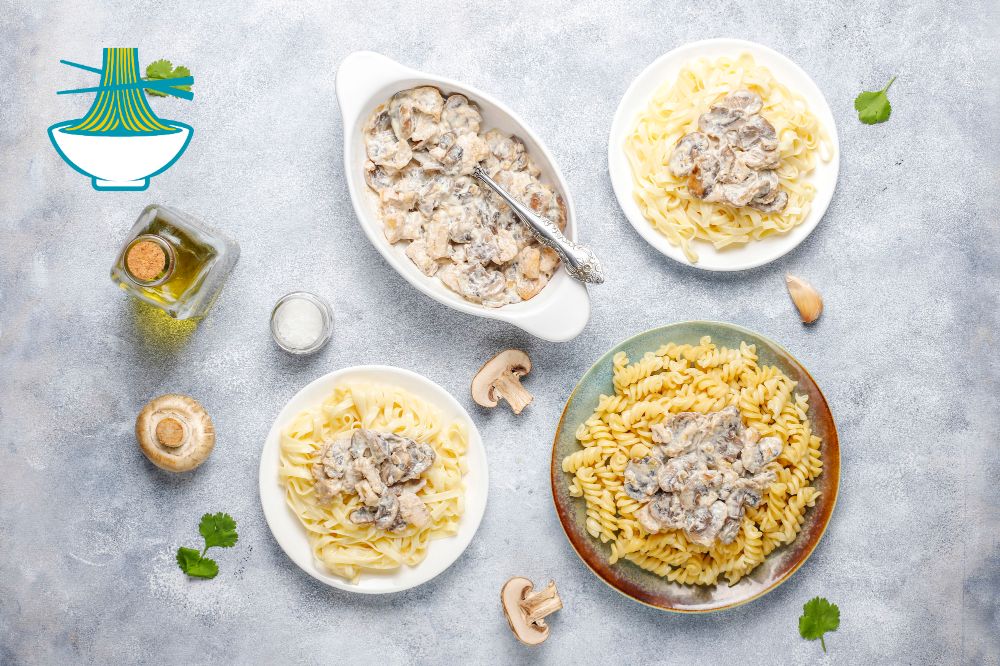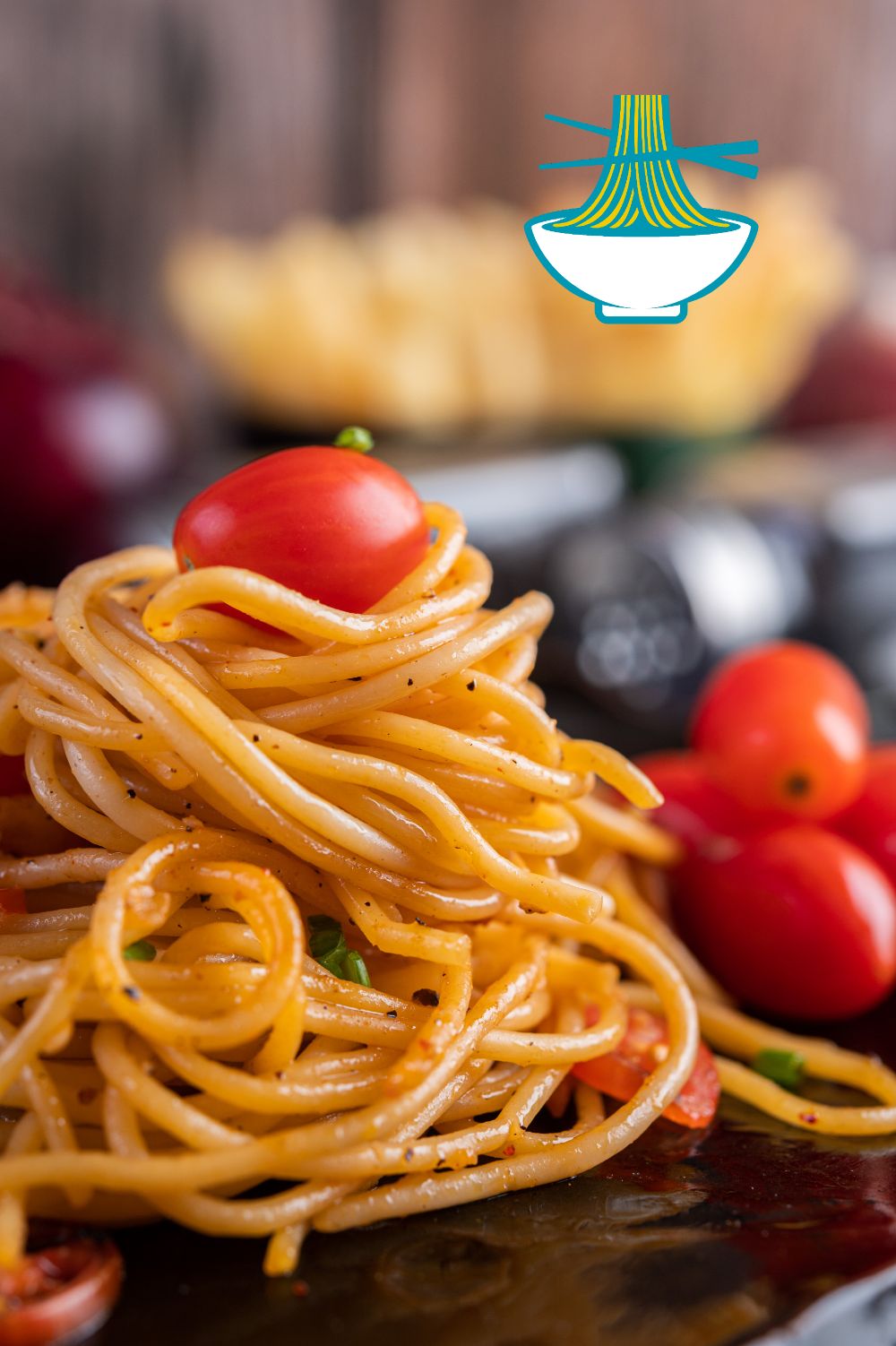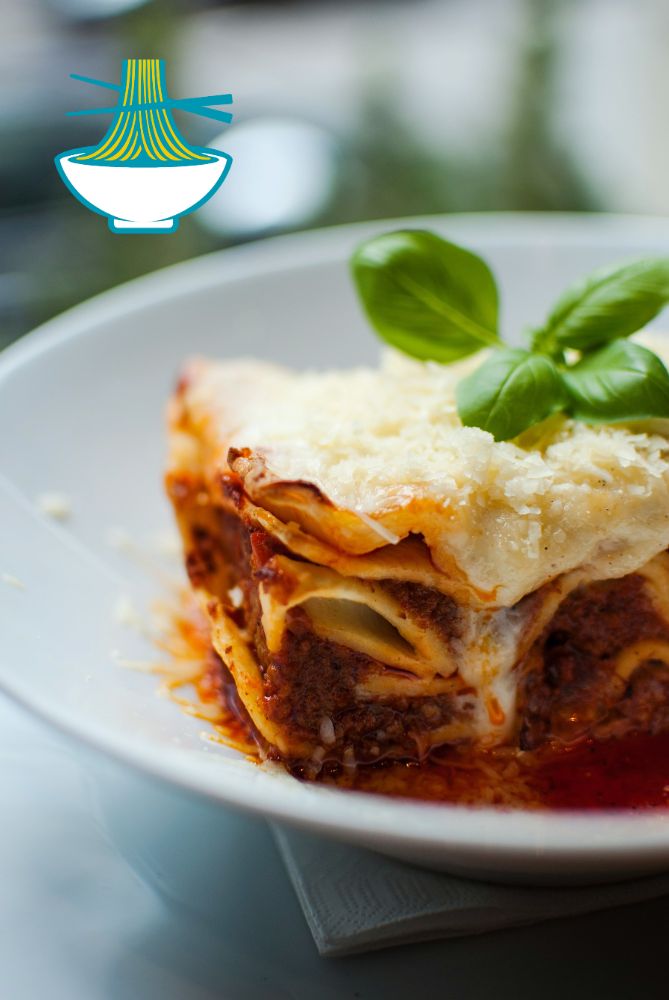Unlock the flavors of Italy with these iconic pasta dishes: Spaghetti Carbonara, Fettuccine Alfredo, and Lasagna. Dive into a world of culinary craftsmanship as we explore the distinctive methods to prepare these mouthwatering Italian classics. From the creamy allure of Carbonara to the indulgent richness of Alfredo and the comforting layers of Lasagna, each dish tells a unique story of Italy's culinary heritage. Join us on this gastronomic journey as we unravel the secrets behind these beloved pasta creations.

Ingredients for Basic Pasta (per serving):
1. Pasta: Choose your favorite type, such as spaghetti, fettuccine, or lasagna sheets.
2. Water: For boiling the pasta.
3. Salt: To season the pasta water.
4. Sauce: Ingredients for the specific sauce of your chosen dish (e.g., eggs, cheese, cream, bacon for Carbonara).
5. Herbs and Seasonings: Optional herbs like parsley, and seasonings like black pepper or garlic.

Preparing Basic Pasta:
1. Boil the Pasta:
- Bring a large pot of water to a boil. Add a generous pinch of salt.
- Add the pasta and cook according to the package instructions until it reaches your desired level of doneness (usually al dente). Stir occasionally to prevent sticking.
- Drain the pasta, reserving a small amount of pasta water, which can be used to adjust the sauce's consistency later.
2. Prepare the Sauce:
- While the pasta is cooking, prepare the sauce for your chosen dish.
Now, let's dive into the distinctive preparation methods for each of the three popular pasta dishes:

1. Spaghetti Carbonara:
Ingredients (per serving):
- 100g spaghetti
- 2 large eggs
- 50g Pecorino Romano cheese (or Parmesan), grated
- 100g pancetta or guanciale (Italian cured pork), diced
- Black pepper, freshly ground
Method:
1. In a bowl, whisk together eggs, grated cheese, and a generous amount of freshly ground black pepper.
2. In a pan, sauté the pancetta or guanciale until it's crispy.
3. Cook the spaghetti until al dente, then quickly drain it and add it to the pan with the pancetta. Toss to coat the pasta with the pork's flavors.
4. Remove the pan from heat and immediately pour in the egg and cheese mixture. Toss vigorously to create a creamy, carbonara sauce. If it's too thick, add a bit of reserved pasta water to adjust the consistency.
5. Serve hot, garnished with additional cheese and pepper.
Nutrition Value
Spaghetti (cooked, per 100g):
- Calories: Approximately 158 kcal
- Carbohydrates: Approximately 31.9 grams
- Protein: Approximately 5.8 grams
- Fat: Approximately 0.8 grams
- Sodium: Approximately 1 mg
Eggs (raw, per 100g):
- Calories: Approximately 143 kcal
- Carbohydrates: Approximately 1.1 grams
- Protein: Approximately 12.6 grams
- Fat: Approximately 9.5 grams
- Sodium: Approximately 140 mg
Pecorino Romano Cheese (grated, per 100g):
- Calories: Approximately 386 kcal
- Carbohydrates: Approximately 0.5 grams
- Protein: Approximately 25.6 grams
- Fat: Approximately 32.8 grams
- Sodium: Approximately 1,627 mg
Pancetta or Guanciale (cooked, per 100g):
- Calories: Approximately 370-500 kcal (varies based on type and preparation)
- Carbohydrates: Approximately 0 grams
- Protein: Approximately 15-20 grams
- Fat: Approximately 35-45 grams
- Sodium: Approximately 1,500-2,500 mg (varies based on type and preparation)
Please note that the nutritional values for pancetta or guanciale can vary significantly depending on the specific type, brand, and preparation method. The values provided are approximate averages. Additionally, the values for the entire recipe will depend on the portion sizes used in your specific dish.
2. Fettuccine Alfredo:
Ingredients (per serving):
- 150g fettuccine
- 60g unsalted butter
- 150ml heavy cream
- 150g Parmesan cheese, grated
- Salt and white pepper to taste
- Optional: Nutmeg for flavor
Method:
1. In a pan, melt the butter over low heat. Add the heavy cream and bring it to a gentle simmer.
2. Stir in the grated Parmesan cheese until the sauce is smooth and creamy.
3. Season with salt, white pepper, and a pinch of nutmeg for extra flavor.
4. Cook the fettuccine until al dente, then drain.
5. Toss the cooked pasta in the Alfredo sauce until it's well coated.
6. Serve hot, garnished with extra Parmesan cheese.
Nutrition Value
Fettuccine (cooked, per 100g):
- Calories: Approximately 138 kcal
- Carbohydrates: Approximately 24.6 grams
- Protein: Approximately 4.8 grams
- Fat: Approximately 1.6 grams
- Sodium: Approximately 1 mg
Unsalted Butter (per 100g):
- Calories: Approximately 717 kcal
- Carbohydrates: Approximately 0 grams
- Protein: Approximately 0.9 grams
- Fat: Approximately 81.1 grams
- Sodium: Approximately 2 mg
Heavy Cream (per 100ml):
- Calories: Approximately 345 kcal
- Carbohydrates: Approximately 2.8 grams
- Protein: Approximately 2.1 grams
- Fat: Approximately 36 grams
- Sodium: Approximately 39 mg
Parmesan Cheese (grated, per 100g):
- Calories: Approximately 392 kcal
- Carbohydrates: Approximately 3.2 grams
- Protein: Approximately 35.8 grams
- Fat: Approximately 25.9 grams
- Sodium: Approximately 1,529 mg
Nutmeg (per 100g, but used in very small quantities):
- Calories: Approximately 525 kcal
- Carbohydrates: Approximately 49.3 grams
- Protein: Approximately 5.8 grams
- Fat: Approximately 36.3 grams
- Sodium: Approximately 16 mg
Please note that the nutritional values provided are approximate averages and can vary based on factors such as the specific brands and preparation methods used. The values for the entire recipe will depend on the portion sizes used in your specific dish. Additionally, the values for ingredients like butter and heavy cream are based on 100g and 100ml respectively, so you may need to adjust them based on the actual amounts used in your recipe.

3. Lasagna:
Ingredients (for a standard lasagna dish):
- Lasagna sheets
- Meat or vegetable sauce (e.g., Bolognese or marinara)
- Ricotta cheese
- Mozzarella cheese, grated
- Parmesan cheese, grated
- Bechamel sauce (white sauce)
- Salt, pepper, and herbs like basil or oregano
Method:
1. Precook the lasagna sheets according to the package instructions, then drain.
2. Layer the lasagna in a baking dish: start with a layer of sauce, then lasagna sheets, ricotta cheese, mozzarella cheese, Parmesan cheese, and bechamel sauce. Repeat until the dish is filled, ending with a layer of cheese on top.
3. Bake in a preheated oven at 375°F (190°C) for about 25-30 minutes, or until the lasagna is bubbly and the top is golden brown.
4. Let it rest for a few minutes before serving.
Nutrition Value
Lasagna Sheets (uncooked, per 100g):
- Calories: Approximately 354 kcal
- Carbohydrates: Approximately 71.2 grams
- Protein: Approximately 12.5 grams
- Fat: Approximately 1.9 grams
- Sodium: Approximately 1 mg
Meat or Vegetable Sauce (per 100g, prepared):
- Calories: Approximately 60-150 kcal (varies based on type and preparation)
- Carbohydrates: Approximately 4-7 grams
- Protein: Approximately 3-10 grams
- Fat: Approximately 1-10 grams
- Sodium: Approximately 300-600 mg (varies based on type and preparation)
Ricotta Cheese (per 100g):
- Calories: Approximately 174 kcal
- Carbohydrates: Approximately 3.9 grams
- Protein: Approximately 10.4 grams
- Fat: Approximately 13.1 grams
- Sodium: Approximately 174 mg
Mozzarella Cheese (grated, per 100g):
- Calories: Approximately 300-370 kcal (varies based on type and preparation)
- Carbohydrates: Approximately 0-3 grams
- Protein: Approximately 20-28 grams
- Fat: Approximately 23-30 grams
- Sodium: Approximately 600-800 mg (varies based on type and preparation)
Parmesan Cheese (grated, per 100g):
- Calories: Approximately 392 kcal
- Carbohydrates: Approximately 3.2 grams
- Protein: Approximately 35.8 grams
- Fat: Approximately 25.9 grams
- Sodium: Approximately 1,529 mg
Bechamel Sauce (per 100ml):
- Calories: Approximately 110-130 kcal (varies based on recipe)
- Carbohydrates: Approximately 7-8 grams
- Protein: Approximately 2-3 grams
- Fat: Approximately 8-9 grams
- Sodium: Approximately 90-150 mg (varies based on recipe)
Salt, Pepper, and Herbs (per 100g):
- Nutritional values for salt, pepper, and herbs are minimal, as they are typically used in small quantities to season the dish.
Please note that the nutritional values provided are approximate averages and can vary based on factors such as the specific brands, recipes, and preparation methods used. The values for the entire lasagna dish will depend on the portion sizes and proportions of ingredients used in your specific recipe.
These distinctive preparations should help you create delicious Italian pasta dishes at home. Enjoy your culinary adventure!


Comments